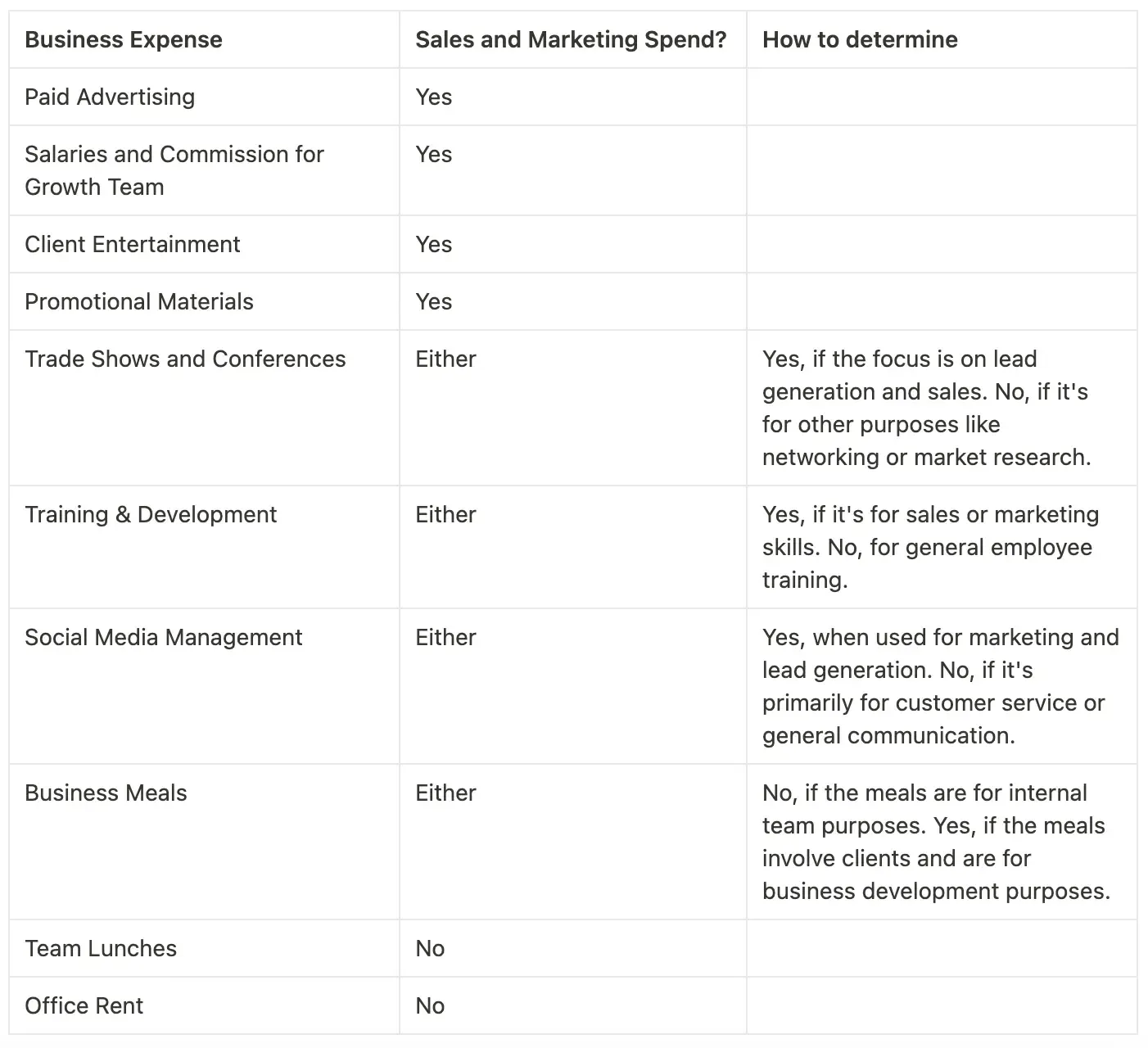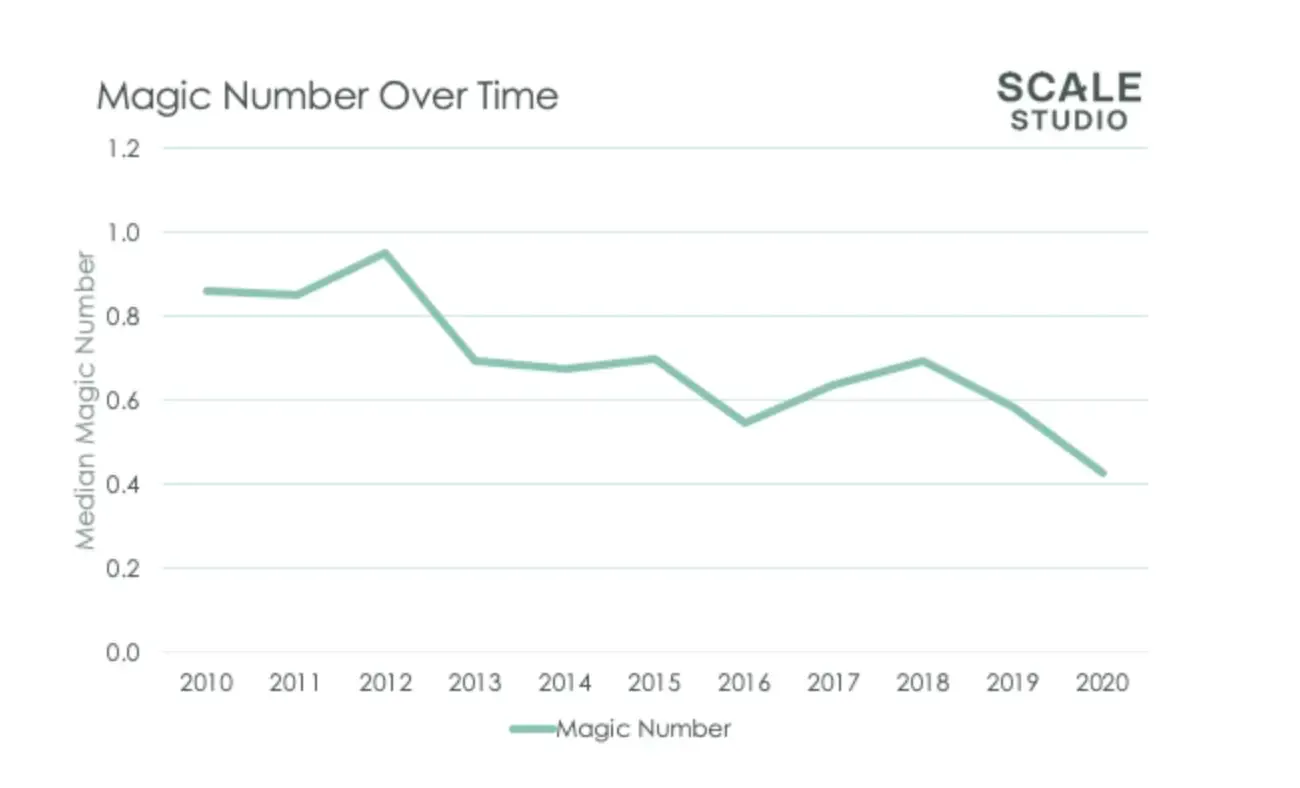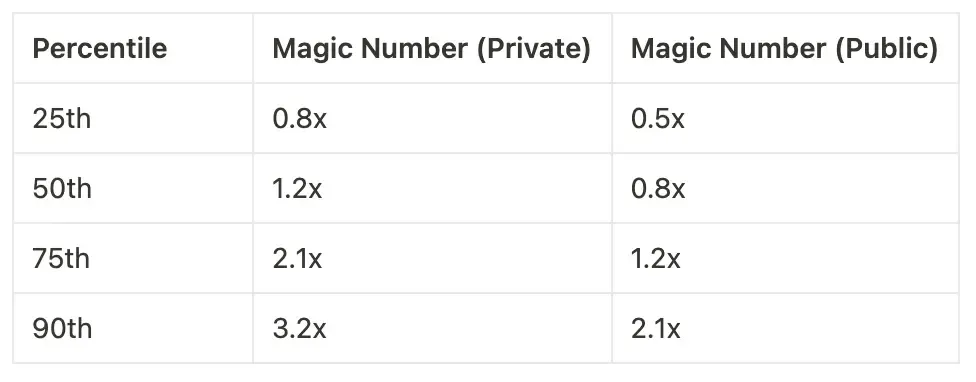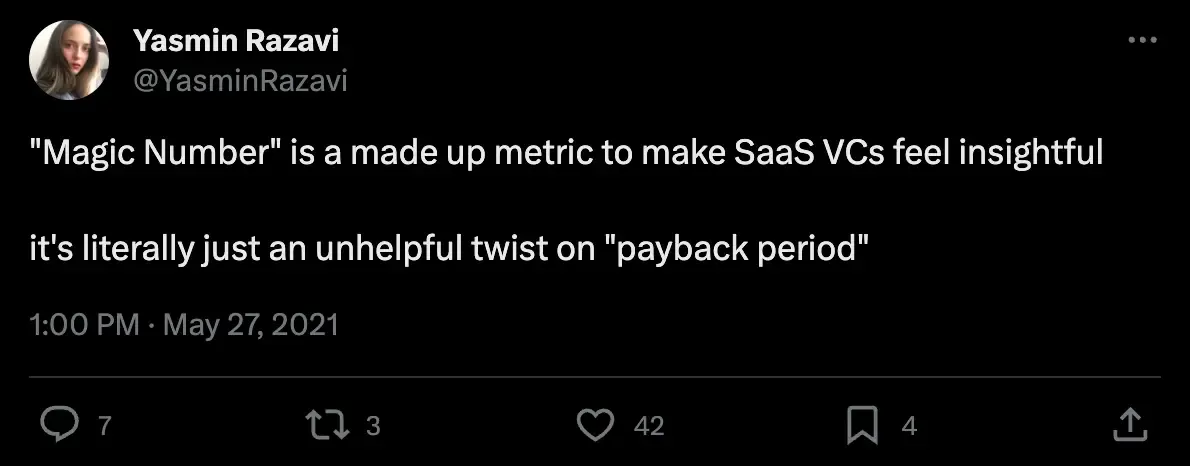With all engineering, data science and analytics in tech, chasing a "magic number" seems quite superstitious.
There's no shortage of buzzwords and fairly useless metrics in tech, particularly when it comes to growth, and SaaS magic number sounds like one of them. When I set out to write this article I was actually a bit convinced that the “magic number” was just another metric that exists to make certain people sound smart (more on that later).
But upon further digging, the SaaS magic number is an actually interesting ratio which gauges the efficiency and health of your sales and marketing engine.
The magic number is certainly not the end-all-be-all metric for most founders and growth teams, but it is helpful to track to help gauge directional improvements or difficulties after changes to strategy or spend. It’s also commonly used by VCs to assess and compare companies across their portfolio / industry.
In fact, the creators of the SaaS magic number, Scale Venture Partners, described it as:
”A measure of go-to-market efficiency that broadly reflects “return” on capital investment”
I'll show you how to calculate the SaaS magic number and also give you some context on some good levels and benchmarks to orient against.
The key question you’ll probably have after reading this — what can I (whoever you are) do to improve my company’s magic number. I can’t find you more customers, but I can tell you some tricks we’ve learned about how specific changes to user experience can flow through to retention and, as a result, your magic number.
SaaS magic number formula
So, let's get started calculating your SaaS magic number. There’s a few components you’ll need to calculate first.
Annual recurring revenue
Your ARR is your annual recurring revenue - your total ongoing revenue projected for one year.
Growth spend
Your Growth Spend is your total sales and marketing expenditures.
Here’s a handy table to help you break out what counts and what does not:

Calculating your SaaS magic number
Here’s all you have to do:
1.) First, you’ll want to break out your ARR for this quarter and the previous one.
2.) Then, tabulate your growth spend. Add all of your sales and marketing expenses per your organization’s accounting standards.
3.) Then, use the formula below:

An example
Let's run through this with hypothetical numbers for a small startup.
Let's say you sell an AI-powered solution (hopefully not a GPT-wrapper 🤡) and that you're growing quickly.
Last quarter you had $100,000 in ARR and you spent $40,000 on growth.
This quarter you had $130,000 in ARR - nice!
Let’s plug those numbers in:

As you can see, you are left with a magic number of 0.75.
Cool … but is that good? bad?
SaaS magic number benchmarks
Now that you're armed with your magic number, it's important to understand how it stacks up against both general industry benchmarks and against your peer companies. The higher the better, of course, but let’s break it down more specifically:
SaaS magic number less than 0.5 😥
Uh-oh. A magic number lower than 0.5 suggests that you may not be utilizing your marketing spend effectively, or that you are running into major growth headwinds and have a bloated team.
For every dollar spent, you are getting less than 50 cents back in new recurring revenue. This may be a signal to reevaluate your sales and marketing strategy or your overall product market fit.
SaaS magic number between 0.5 and 1 👍
Nice, not doing too bad! A SaaS magic number between 0.5 and 1 represents moderate efficiency, as you are generating between $0.75-1 in new recurring revenue for every dollar spent.
You might think this is still bad. Generating less than a $1 out for every $1 in? But remember that ARR is recurring. So if you are at 0.5, you’ll “pay back” your dollar after year 2.
It’s typically considered a reasonable return on investment, but there might still be room for improvement.
SaaS magic number greater than 1.0 🤩
You’re crushing it! A magic number greater than 1 is a strong indicator that you’re efficiently converting sales and marketing spend into additional revenue.
It often signifies that the business is scalable, and additional investment in sales and marketing could potentially lead to even more revenue growth. VCs love to see this!
Magic number expectations can vary greatly
A good average for your SaaS magic number can be very different depending on if you're private or public, the size of your company, and broader industry or macroeconomics factors.
Some of these include:
- Stage of the Company: Early-stage companies often have fluctuating SaaS magic numbers as they experiment with their sales and marketing strategies. In contrast, established companies typically look for a consistent or improving magic number over time.
- Sales Cycle Length: For companies with longer sales cycles, the magic number might be lower due to the delayed impact of sales and marketing spend on revenue growth.
- Market Saturation: In highly saturated markets, higher marketing spend might be necessary to stand out, which could affect the magic number (in fact, IVP says this is exactly why magic numbers go down for larger companies as they mature.)
- Economic Climate: During economic downturns, a lower magic number may be acceptable due to the overall reduction in spending and investment.
Scale Venture Partners, the creators of the SaaS magic number, produced a report back in 2020 that detailed the past decade of SaaS magic number averages within private software companies.

As you can see, over time the average SaaS magic number has decreased, which SVP attributes to an increasing pressure on private companies to accelerate growth spend ahead of IPOs (gotta juice up the offering price!)
SVP’s good/bad barometer for private companies is around 0.7.
On the other hand, Institutional Venture Partners, another SaaS VC, produced a different analysis around the same time which found an average of around 1.2x for private companies, and 0.8x for public companies.

It's no surprise to see a fairly sizable gap between public and private companies, but what explains the difference in private averages? Well, the data universe for each of these studies was likely limited to portfolio companies and thus not a perfect benchmark of the entire industry.
That said, it's fairly safe to say that a private SaaS company should strive for a SaaS magic number above 1, and feel comfortable as long as it is above about 0.7.
The firing and hiring trap
As a product person, you may not think you can directly impact the magic number. It seems down to the sales team and marketing team only, right?
WRONG!
There are big ways you can positively impact the SaaS magic number without totally overhauling your product.
But don't worry, you're not alone in not recognizing this immediately.
Most teams fall into the trap of exclusively working to improve their growth team. They might:
- Hammer their sales people to work harder and burn them out
- Buy more leads 🤢
- Look for operational efficiencies (fire people to cut costs)
Now it's possible that some of these measures might work — I'd be lying if I said that they never do.
But just because this is the most obvious lever does not mean it is the most effective one overall.
The reality is that there are quicker and cleaner ways to improve your overall performance and your SaaS magic number without focusing exclusively on your growth team.
Non-obvious product levers for improving your magic number
So how does the actual product fit in here? Can product and engineering teams do anything to improve the magic number?
It's no secret that the better your user experience is, the better your user satisfaction will be. This leads to higher activation, engagement, and retention, which boost all of your metrics across the entire business.
It's not rocket science.
However, it can be challenging to identify the ways that these product design decisions and your digital adoption strategy can be improved to boost your growth and SaaS magic number.
But, it’s possible!
Let's walk through three examples of how a user assistance platform can help you find easy improvements:
Personalized onboarding
How it helps your UX: Use enhanced product tours and nudges can offer a personalized onboarding experience for new users, guiding them through the core functionalities of the software. By tailoring the tour to user behavior, new customers can quickly find value in the product, which is critical for activation and initial engagement.
How it helps growth and the SaaS magic number: A seamless onboarding process can significantly reduce early churn rates. When users feel competent and excited using the software, they are more likely to integrate it into their daily workflows, thus improving their lifetime value (LTV) and positively affecting your SaaS magic number.
Contextual tooltips for product adoption
How it helps your UX: Introducing tooltips within the platform can help users discover and understand new features or underused functionalities. By providing contextual assistance, these ensure that users can progress without friction, fostering a deeper engagement with your product.
How it helps growth and the SaaS magic number: Continuous engagement with the product’s features leads to increased dependency and satisfaction, which in turn, decreases the likelihood of churn.
AI Copilot that lets your users chat directly with all of your product knowledge
How it helps your UX: Our AI Copilot connects to all of your help documents, knowledge base, and other resources, and puts a direct chat feature in front of your users. No more waiting for agents, no more digging through outdated help center articles, no more frustration and anger. Your users can quickly and easily ask in normal language the questions and problems they're facing, and get similarly tailored and focused help immediately.
How it helps growth and the SaaS magic number: You can reduce customer frustration and churn, and also free up your support agents. You'll improve your retention and revenue while also cutting on overhead + driving product-decision making with these insights that provides exponential returns.
These are just three examples of how product changes that can be made quickly can improve your customer satisfaction, and how that will bleed through into the rest of your business, including to your SaaS magic number ratio.
Don’t overemphasize the magic number
The magic number is not a crystal ball.
It does not operate in a vacuum and should be analyzed in the context of other key performance indicators such as Customer Lifetime Value (CLTV), Customer Acquisition Cost (CAC), churn rate, etc.
For example, a high magic number with a high churn rate could indicate that while growth has got new customers flowing in, there might be product or CS issues that are killing your retention.

Or, you can be like Yasmin and disregard it entirely — it’s up to you!
What to make of the SaaS magic number
The SaaS magic number can be a helpful metric to gauge the efficiency of your growth engine, but it's not the only metric you can measure nor should you focus exclusively on improving it through changes to your growth team. Utilizing enterprise project management software can help you identify and optimize various aspects of your business operations beyond just the growth team.
When you build with a user-first mentality, you can deliver amazing onboarding and in-product experiences that create more loyalty and engagement. In the long run, assisting your users, instead of prescriptively guiding and directing them, will improve retention and contribute to a better SaaS magic number more than firing people or pushing your sales folks beyond the limit ever would.

















